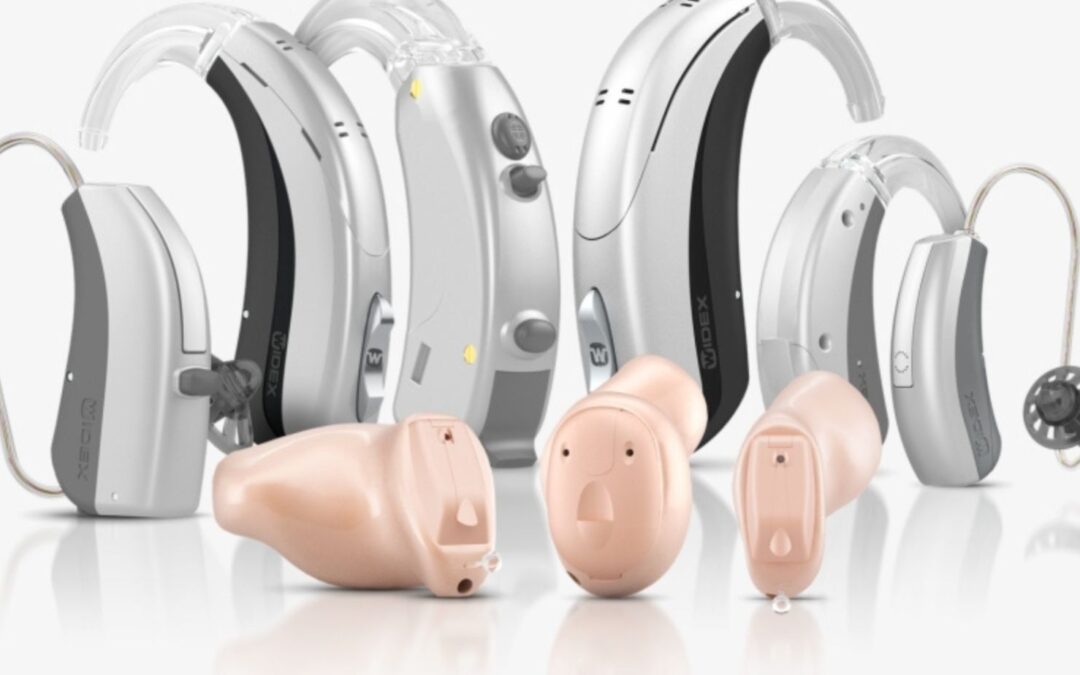Hearing loss is a widespread condition that affects millions of individuals across the globe, significantly impacting communication, social interactions, and overall quality of life. Thankfully, with the rapid advancements in auditory technology, a wide array of hearing aids have been developed to cater to various types and degrees of hearing impairment. These devices are designed not only to improve hearing but also to enhance the daily lives of those affected. This comprehensive guide delves into the myriad types of hearing aids available in the market today, providing detailed insights into how each type functions and offering guidance on choosing the right one to suit your specific hearing needs and lifestyle. Whether you’re experiencing mild, moderate, or severe hearing loss, understanding the options available can empower you to make an informed decision and significantly improve your auditory experience.
List of the Different Types of Hearing Aids
Behind-The-Ear (BTE) Hearing Aids
Overview: BTE hearing aids are among the most common and versatile types available. They consist of a small plastic case that rests behind the ear, connected by a clear tube to an ear mold that fits inside the outer ear. These are used by individuals of all ages and suit almost every type of hearing loss.
Features:
- Suitable for mild to profound hearing loss.
- Larger size allows for bigger batteries for longer life and additional features like directional microphones.
- Easily connected to assistive listening devices.
In-The-Ear (ITE) Hearing Aids
Overview: ITE hearing aids are custom-made to fit within the outer portion of the ear canal, making them less visible than BTE models. They are typically used by adults and are easier to handle than smaller devices. The Best Hearing Aids are here https://crystalclearhearingcenter.com/hearing-aids/
Features:
- Good for mild to severe hearing loss.
- Custom-fit offers a high level of comfort.
- Some models come with added features such as volume control.
In-The-Canal (ITC) and Completely-In-Canal (CIC) Hearing Aids
Overview: ITC and CIC hearing aids are smaller than ITE models and are designed to fit partly or completely within the ear canal, making them nearly invisible.

Features:
- Best for adults with mild to moderate hearing loss.
- Cosmetic appeal due to less visibility.
- Smaller size means a shorter battery life and fewer features.
Receiver-In-Canal (RIC) Hearing Aids
Overview: Similar to BTE aids, RIC hearing aids feature a small case that sits behind the ear, but the receiver, or speaker, is located in the ear canal. This separation allows for a smaller, more discreet behind-the-ear portion and reduces sound distortion. RIC hearing aids are particularly helpful for individuals whose hearing has been impacted by prolonged exposure to loud environments. Many people aren’t aware that jobs that can cause hearing loss often involve high levels of noise exposure, making hearing aids like these an essential tool for daily life.
Features:
- Suitable for mild to severe hearing loss.
- Discreet design with the speaker placed directly in the ear canal.
- Improved sound quality with less feedback.
Extended Wear Hearing Aids
Overview: These are non-surgical hearing devices that are worn continuously for extended periods, such as several weeks, without removal.
Features:
- They are invisible as they are placed deep in the ear canal.
- Suitable for mild to moderate hearing loss.
- Beneficial for active individuals as they do not require daily removal and maintenance.
Bone Anchored Hearing Aids (BAHA)
Overview: Unlike traditional hearing aids that amplify sound through the ear canal, BAHA devices transmit sound through bone conduction. They are suitable for individuals with conductive hearing loss, mixed hearing loss, or single-sided deafness.

Features:
- Works by directly stimulating the inner ear through the bone.
- Requires surgery to implant a small post that anchors the hearing device.
- Ideal for those who cannot wear traditional hearing aids due to ear canal issues.
Conclusion
Understanding the different types of hearing aids is crucial in making an informed decision about which device will best suit your needs. Whether you prioritize invisibility, ease of use, or durability, there is a hearing aid type that aligns with every preference and requirement. Consulting with an audiologist can further help determine the best model based on your specific hearing loss, lifestyle, and budget. With the right hearing aid, many individuals find significant improvements in their ability to communicate and participate in daily activities, enhancing their overall engagement with the world around them. Moreover, the correct choice of hearing aid can boost self-confidence and decrease the social and psychological impacts of hearing loss. Ultimately, a well-chosen hearing aid not only improves hearing but also enriches the quality of life, making everyday interactions more enjoyable and less stressful.
Jessica has a flair for writing engaging blogs and articles. She enjoys reading and learning new things which enables her to write different topics and fields with ease. She also strives to break down complex concepts and make them easy for anybody to comprehend.





